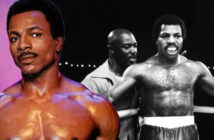By Alexander Cárdenas and Sibylle Lang
“The Role of Sport in Peace Building and Post-Conflict” was recently discussed in a public debate at the Geneva Centre for Security Policy, a think tank and executive education institution for diplomats, military officers, NGOs, IOs and the private sector involved in security and peace issues. In our view, this debate, involving researchers, practitioners and a former Olympic medalist and Peace and Sport “Champion for Peace” on the panel and a broad public audience from international Geneva, is another promising sign that sport is increasingly recognized as a viable peace building instrument, along with the growing number of actors that support and implement sport-for-peace-building activities.
Despite all this progress, we strongly feel that framing sport as a strategic tool for peace building and to support the positive development of post-conflict situations still remains a task to be fully accomplished. In fact, if we want our efforts of framing and using sport as a viable peace building tool to be successful in the long run, it is paramount that we engage in systematically exploring answers and gathering evidence with view to mainly three closely connected questions. These questions are: First, what are the main challenges in peace building and post-conflict situations? Second, why and how can sport help in those situations, meaning, which are the main features and mechanisms of sport that can contribute to promoting peace and positive social transformation in post-conflict situations? Third, what are preconditions of success of sports-based peace interventions, and how do we honestly measure success?
There is already vast experience and insights that we can build on: Due to its universality sport can cross barriers of many kinds and can potentially become a common denominator among communities. Sport can serve as an icebreaker between parties in conflict and open up channels of communication that have remained closed due to war. Due to its capacity to mobilize and connect people very effectively, sport competitions can become areas of active social networking. When groups that have clashed come together through sport, and if sport is implemented and articulated in a proper manner, there is the possibility to reframe social relations that may have been broken due to conflict.
The Open Fun School Project, is an example of this; it has brought together since 1998 thousands of children and families from communities in Bosnia and Herzegovina to come together through sport. Also, sport programs can provide physical rehabilitation and healing for victims of war through psycho-social programs. One example of this comes from Sri Lanka, where cricket, the country’s most popular game, was used to rehabilitate hundreds of children victims of the internal conflict. Finally, sport has been recognized as a platform for learning and important lessons and values, including peace-related ones, (respect, dialogue, etc.) can be transmitted via this means.
However, we need to make sure that both scientific research and practical projects work hand in hand to more fully grasp the beneficial effects of sport in peace building and post-conflict situations as well as its limitations. For this is key that a more intense and systematic exchange takes place between research and practical work in the field of sport for peace. Only then can sport be employed to promote peace in an ever more strategic, systematic and effective manner.




